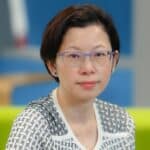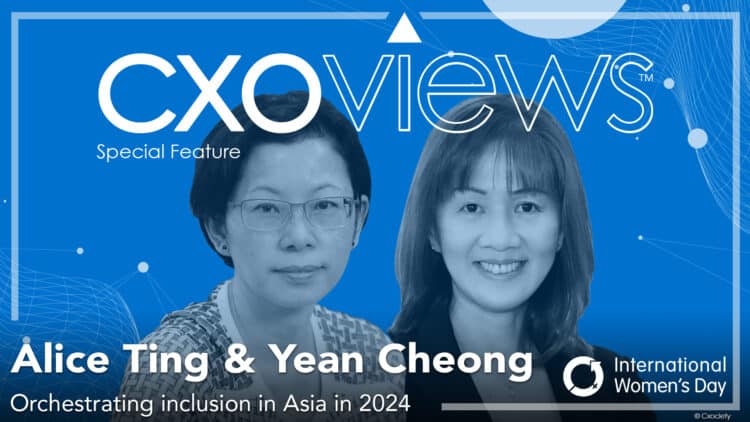The IBM Institute of Business Value report, Women, leadership and the priority paradox, highlights the continuing plight of women for more equal footing in the enterprise. In a global survey involving 2,300 organisations, on average, only 18% of top leadership positions—including the C-suite, vice presidents, directors, and senior managers—are held by women.
The report claims that despite greater awareness, many organisations are not fully sold on the benefits of gender equality in leadership, even though ample evidence correlates gender equity with improved financial success and competitive advantage.
The report further revealed that organisations are over-relying on “good intentions” and applying a laissez-faire approach to diversity, rather than applying the disciplined focus on operational execution they apply to other aspects of organisational performance.
Asked for her take on inclusion, the theme for the 2024 International Women’s Day theme, Telstra’s Hong Kong managing director, Alice Ting argues that inclusion is about fostering an environment where every employee feels safe, respected, and valued. She posits that it involves encouraging individuals to freely express their thoughts, concerns, and ideas without judgement or the fear of negative consequences.
“Beyond this, inclusion encompasses various dimensions, such as gender, sexual orientation, ethnicity, race, religion, and background. It is not limited to any specific group; it’s a collective effort that both men and women must advocate and encourage within their organisations,” she added.
The state of inclusion in the workplace today

Yean Cheong, executive director with SGTech in Singapore believes that leadership plays a crucial role in fostering a culture of inclusion, with this commitment starting from the top.
Looking inward at SGTech she notes that as an organisation it comprises individuals from diverse disciplines, backgrounds, experiences, and skill sets, all united in our cause.
“We are committed to continuous learning and transformation, emphasising the importance of thinking differently, keeping an open mind, and being receptive to emerging trends locally and globally,” she adds.
She posits that inclusion is integral to SG Tech's ethos as: “we build our Secretariat and tech community.” SGTech is dedicated to enabling anyone who wishes to join the tech workforce, irrespective of their current qualifications, skill sets, gender, culture, ethnicity, or age.
“This commitment also extends to our team at SGTech, ensuring that we embody the inclusive values we advocate for,” she adds.
At Telstra, the message of inclusion resonates just as well. According to Ting, diversity, equity, and inclusion (DEI) are embedded in Telstra’s culture. She notes that gender equality is a core part of Telstra’s corporate values.
“Telstra requires at least 50% female representation on recruitment and interview shortlists. What’s more, our CEO is a female leading by example,” she continues.
“Paying men and women equally is also fundamental to improving female workforce participation. At Telstra, we conduct remuneration gap analysis and have targets in place to help us see more women at the Executive and Senior Management levels.
“We take pride in fostering an inclusive environment for all employees and spearhead various initiatives to promote DEI in our community,” said Ting.
Obstacles to Inclusion
Despite significant progress in recent years, gender inequality persists in many parts of Asia. Gender stereotypes, traditional gender roles, and limited opportunities for women hinder progress toward achieving gender parity.
Cheong cites the presence of unconscious biases as an obstacle to inclusion. She says it leads to a lack of empathy and understanding towards others. She warns that these biases can result in difficulty identifying skills and needs gaps within a diverse workforce.
Telstra’s Ting concurs adding that unconscious bias in the workplace can significantly hinder efforts to promote diversity, impact recruitment strategies, and affect employee retention. “These biases subtly shape an organisation’s culture, often without us realising it,” she added.
Cheong opines that organisations may struggle with fostering a culture of learning where individuals are encouraged to continuously develop their skills and knowledge. “Overcoming these obstacles requires a concerted effort to raise awareness of unconscious biases, cultivate empathy, and promote a culture of inclusivity and continuous learning,” she continued.
Ting believes that it is crucial that everyone consciously acknowledge the existence of such biases and actively advocate for individuals who may not belong to privileged demographics.
“By fostering awareness and championing inclusivity, we can create a more equitable and supportive work environment for all. Unconscious biases subtly shape an organisation’s culture, often without people realising it,” she continued.

Ting called out education programs and policies at Telstra to tackle unconscious bias directly. “From training to support our people with practical techniques to find common ground and discuss difficult topics through to our equitable hiring practices and pay reviews that specifically seek out bias, we’re striving to eliminate bias in all its forms,” she elaborated.
She explains that leaders are trained to shift their approach in hiring, meetings, assignments, and review/promotions, so they can recognise and interrupt unconscious bias in their day-to-day.
“It’s crucial that everyone consciously acknowledge the existence of such biases and actively advocates for individuals who may not belong to privileged demographics. By fostering awareness and championing inclusivity, we can create a more equitable and supportive work environment for all.”
Alice Ting
Inclusion lessons
Cheong says achieving inclusion requires a multifaceted approach. Firstly, she suggests pushing for skill-based hiring, where individuals are evaluated based on their competencies rather than traditional qualifications. “This approach promotes diversity and ensures that the workforce is equipped with the necessary skills for the job,” she added.
She also posits cultivating an attitude of lifelong learning within the organisation is crucial. “This involves encouraging employees to continuously develop their skills and knowledge, fostering a culture where learning is valued and supported at all levels,” she added.
These efforts can help create a more inclusive and dynamic work environment where individuals are empowered to reach their full potential.
For her part, Ting believes that championing inclusion requires a united and collaborative effort that transcends individual responsibility. It is not a matter solely relegated to someone else's concern; rather, it implicates each one of us.
“Both women and men hold significant roles in driving this transformative process. As we commemorate International Women's Day, the conversation should extend beyond celebrating women; everyone should be part of the discussion in shaping and nurturing an inclusive environment,” she added.
Inclusion – a call to action
“To inspire inclusion within SGTech, we have implemented several key strategies,” started Cheong. “Firstly, we have a clear organisational structure and unbiased HR hiring policies to ensure fair hiring practices. This includes defining roles and responsibilities to support hiring based on the right size and right skills.
“Additionally, we have in place year-long learning & development plans that encourage and reward upskilling and reskilling, enable skills exchange, training, and talent development within teams and across the organisation to foster a culture of continuous learning and development.
“Promoting mindfulness is another crucial aspect, encouraging individuals to refrain from judging others based on appearances, be aware of perceptions, and use language that is respectful and inclusive.
“Providing open feedback channels, conflict resolution mechanisms, and access to counselling as needed will further enhance inclusivity and support employee well-being. Our goal is to build a lifelong learning and growth culture where every individual feels valued, respected, and empowered to contribute their best,” concluded Cheong.
Ting believes in leading by example and creating an environment where every individual feels genuinely valued and heard. “At the office, I actively cultivate diversity by acknowledging and encouraging a rich blend of cultures and perspectives. I believe through positive reinforcement and setting clear goals, we can shape a more inclusive workplace for all,” she added.
In Hong Kong, Ting reveals that the company plans to relaunch a mentorship program with a specific focus on nurturing and empowering young female leaders. “While emphasising the significance of inclusion, it’s essential to acknowledge that a truly inclusive environment transcends gender boundaries,” she continued.
“It is important to ensure every individual has an equal opportunity to succeed, irrespective of their background or identity. By actively encouraging individuals to voice their perspectives and providing support on their journey toward success, we contribute to creating an environment where everyone thrives.”
Similarly in Singapore at SGTech, Cheong says the plan is to continue walking the talk by embracing diversity in all its forms. “Currently, our permanent hybrid working model approach not only fosters a more flexible and adaptable work environment but also significantly facilitates the seamless transition for mothers returning to full-time employment, thereby promoting inclusivity and flexibility within our workforce,” she revealed.
“In addition, we also work on maintaining a workforce that spans a wide range of ages, from fresh graduates to individuals in their post-50s, as well as welcoming interns from Institutes of Higher Learning (IHLs),” she added.
“We recognise and value the skills and experience that each of our colleagues brings to the table, fostering an environment where everyone feels valued and included.”
Yean Cheong



